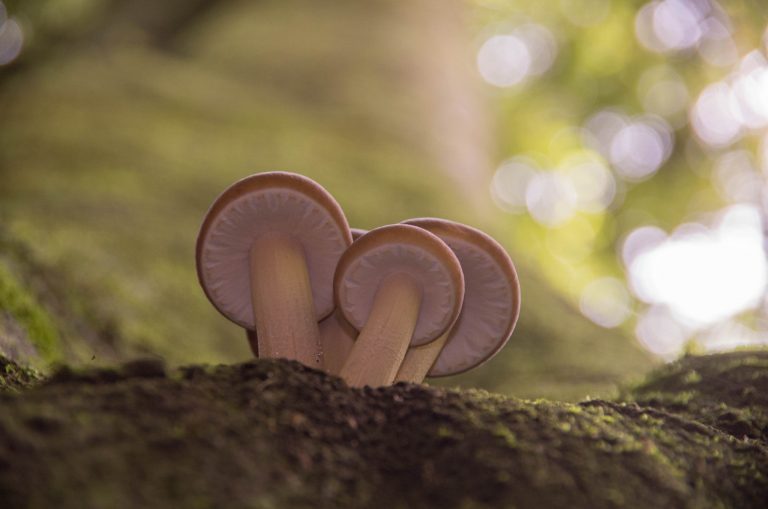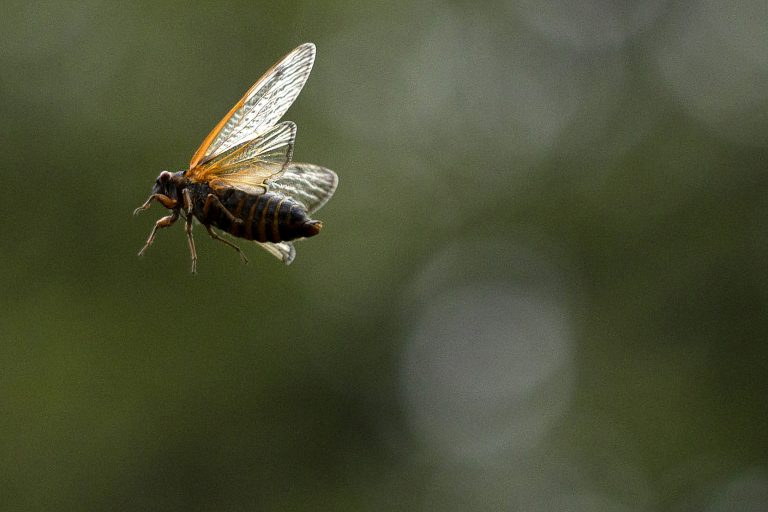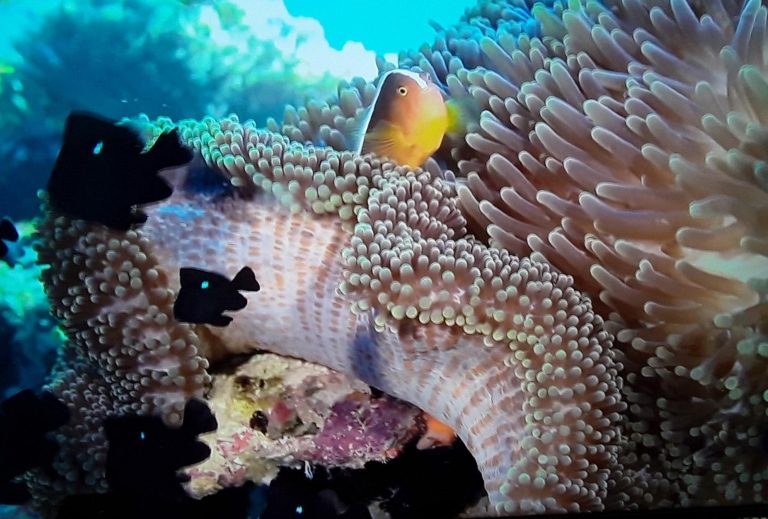Since the revolutionary discovery of the first synthetic polymers in 1869, plastics have become an indispensable part of everyday life. They were, in their own way, an eco-friendly solution for replacing natural materials like ivory, tortoiseshell, fur, leather and linen. Little did anyone imagine we would be exploring polymer-eating mushrooms as a way to dispose of this fine material a mere century later.
The polymer problem
By 1968, people had begun to realize that synthetic polymers posed an environmental threat, as the disposal of plastic products did not make them go away. Instead, they accumulate in our landfills, oceans, and waterways, creating toxic environments for fish, birds, mammals and man.
For decades we have been grappling with this dilemma through various means: Reuse, Reduce, Recycle became a popular motto. A word that originally meant “easily shaped, or pliable” soon became synonymous with cheap, poor quality, or imitation. Nevertheless, we have maintained, and even strengthened our dependence on plastics.

In 1979 the single-use plastic shopping bag was introduced. It was quickly adopted by supermarkets and retail stores alike. Nearly everything we buy today is ultra-packaged, with plastic cartons inside of boxes sealed within plastic, all housing contents individually-packaged in plastic.
In response to the growing awareness of their environmental hazards, many municipalities are now issuing bans on plastic shopping bags; yet that only slows down the waste production, without addressing the EPA’s estimated 1.3 trillion plastic bags that are currently in the ocean, or the 8.3 billion metric tons of plastic already contaminating the environment.
Success
You are now signed up for our newsletter
Success
Check your email to complete sign up
Recycling is only possible for a fraction of the plastics currently made, and even then it is neither energy efficient, nor user-friendly. Consumers may not be aware of the many restrictions that need to be heeded for successful recycling. Re-using plastics is fine, until they break—which they do—since they are plastic. But they still don’t break down. A viable solution would be one that actually degrades the plastics into natural biological materials once again. Sound far-fetched? Not really.
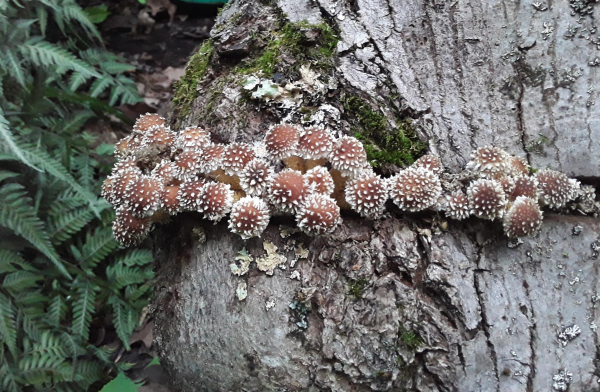
Polymer-eating mushrooms
As early as 2011, researchers at Yale University discovered that several species of fungi in the genus Pestalotiopsis demonstrated the ability to degrade both solids and liquid suspensions of the plastic material polymer polyester polyurethane (PUR) to form organic matter. Two of these species were able to survive in both aerobic and anaerobic (oxygen-free) environments, feeding only on the PUR.
Most of our plastic waste is in landfills, notoriously ill-equipped for decomposition because they are both dry and dense (lacking oxygen). The next largest accumulation is in our oceans. Fungi that can work under such a wide range of compromised conditions offer promising prospects for the future of plastic decomposition.
How does this work?? The mysterious mycelium
While at first glance, one might assume a mushroom’s mycelium to be comparable to the “root” of a plant, this filamentous web is actually the main structure, making up a good 95 percent of the fungal body. Mycelial activity mainly takes place out of sight.
Mushrooms cannot photosynthesize to make their own food. Instead, the mycelium’s microscopic hyphae work their way into other matter, a substrate, which they break down and absorb nutrients from. Only when conditions are ripe will fruiting bodies (mushrooms) appear. This is the reproductive stage, and often accounts for only 5 percent of the organism’s life cycle.
Mycelia, however, are almost always active, and they are long-lived on top of that. Dormant mushrooms have invisible mycelia that may live for years, or even decades, busily breaking down organic (or plastic) matter while they await promising conditions for reproduction. The object of reproduction is to generate a multitude of spores, which will germinate under the right conditions to generate hyphae—the building blocks of mycelium, and the key component in decomposing plastics.
Hyphae are microscopic tubular filaments that secrete enzymes which break polymers down into smaller “monomers.” The monomers are then absorbed by the mycelium, as the hyphae transport the nutrients to other parts of the fungal body.
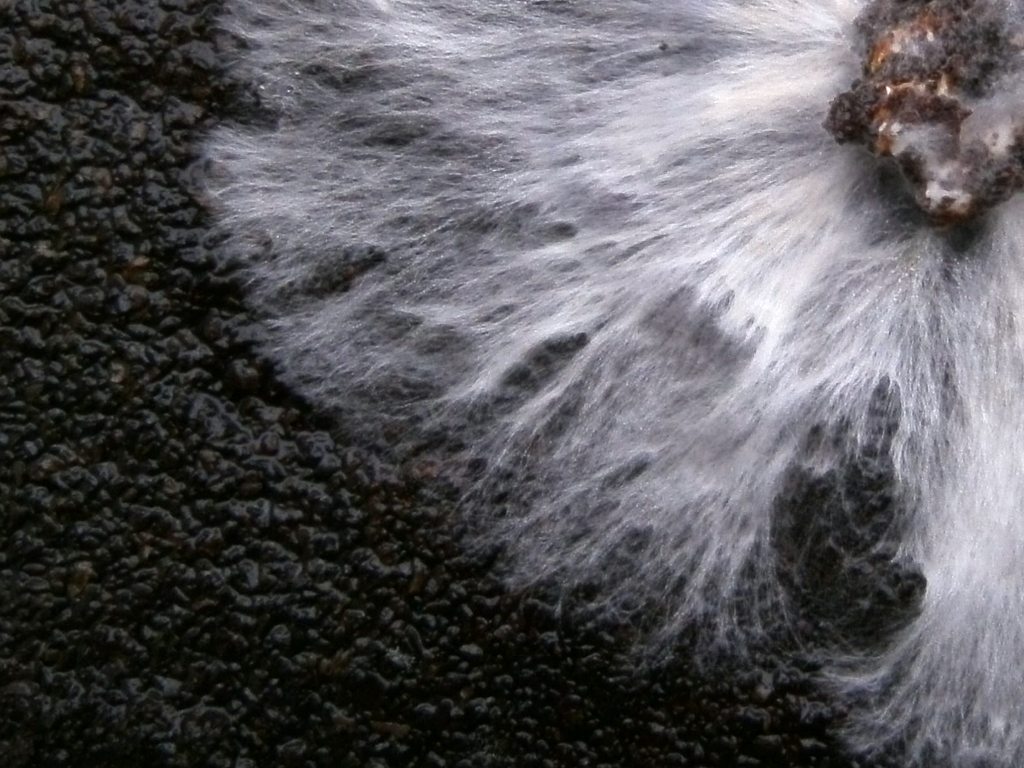
Hyphae are largely composed of chitin, or fibrous polysaccharides, that lend a remarkable strength and rigidity to these tiny threads. This enables them to penetrate far and wide; so far, in fact, that some mycelia have been known to span over a mile of distance, spreading as far as the nutrient substrate is available. They grow outward in a radial pattern from their origin, with hyphae in such density that a cubic centimeter of substrate might contain an accumulated length equal to a half a mile of fibers.
Home application
After the initial discovery of Pestalotiopsis’ decomposition abilities, further research uncovered additional genera of fungi, bacteria, and actinomycetes (for a total of 90) that were capable of degrading plastics—including the edible Oyster mushroom (genus Pleurotus). What if we could have our own at-home recycling center, where discarded plastics could be made into something useful; even, perhaps, edible?
Researcher Katherina Unger recognized the possibilities and set to work. She developed a prototype for the “Fungi Mutarium,” a residential-scale recycling system in which plastic waste is used to grow edible oyster mushrooms.
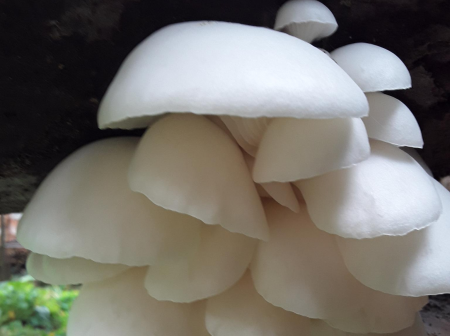
The concept is still being researched and is not yet commercially available, but if you are interested in experimenting on your own, you can purchase oyster mushrooms in liquid culture. Plastics should be pre-exposed to UV light in order to initiate the degradation process. In theory, the resulting mushrooms should be safe to eat because they will have broken down the plastics without storing the contaminants, but do proceed with caution.
Additional applications for mushrooms and mycelia
Another entrepreneurial group is looking at using mushrooms to grow materials suitable for replacing plastics. Ecovative, a company bent on moving away from plastics, aims to provide biodegradable plastic alternatives grown from mycelium. Their “MycoComposite” technology binds sustainable materials with mycelial fibers to form sustainable packaging and building materials. They also produce sustainable, durable, mycelium leather and other materials through a vertical growth process.
An environmental group in Oregon experimented with mushrooms in water purification. Burlap sacks filled with a substrate of coffee grounds and straw, inoculated with mushroom spawn, were placed in the path of storm drains in order to break down pollutants. Lab tests involving the highly contaminated Chicago river showed oyster mushrooms had a 99+ percent removal rate of E. coli within 96 hours.
This process of mycoremediation has a broad range of applications. Mushrooms are currently being used to modify farm run-off, removing contaminants by both filtration and degradation. Hay bales inoculated with oyster mushrooms were able to remove asbestos, arsenic, lead and Polycyclic aromatic hydrocarbons (PAHs) from water contaminated with wildfire ash in California.
The extensive biomass of oyster mushroom mycelia is also conducive to absorbing heavy metals from the soil. Toxins are collected in the mycelia where enzymes break them down into more benign substances.
If you thought mushrooms were just a good pizza topping, think again.



